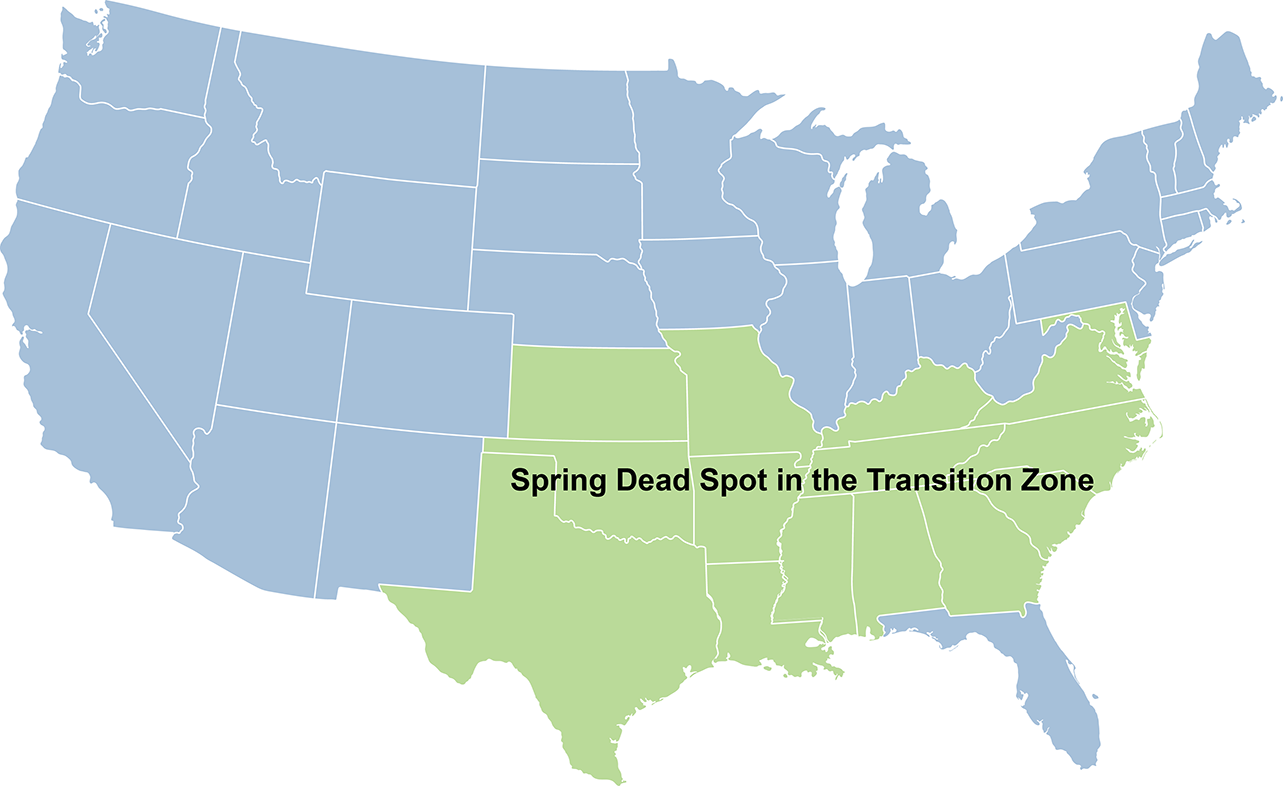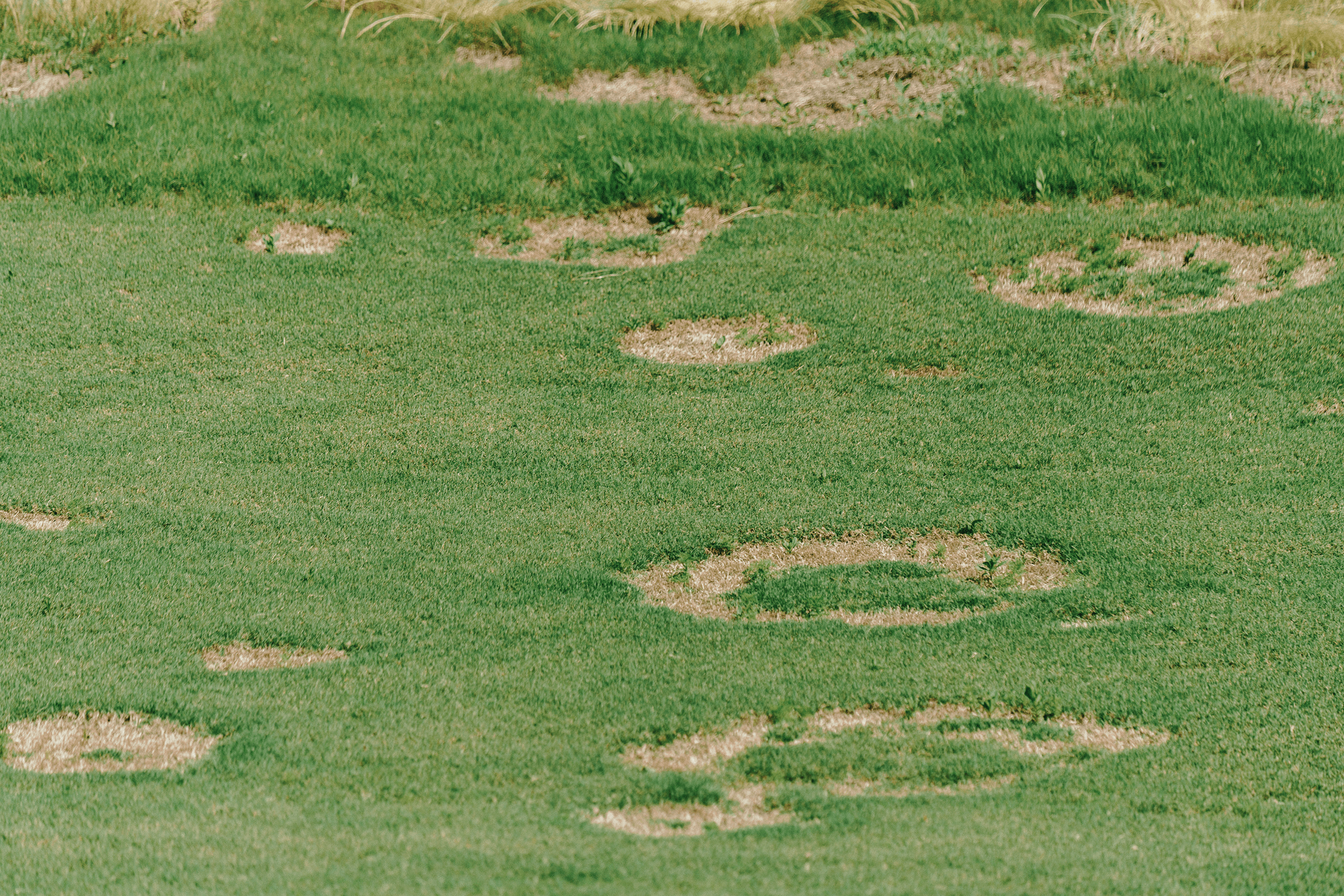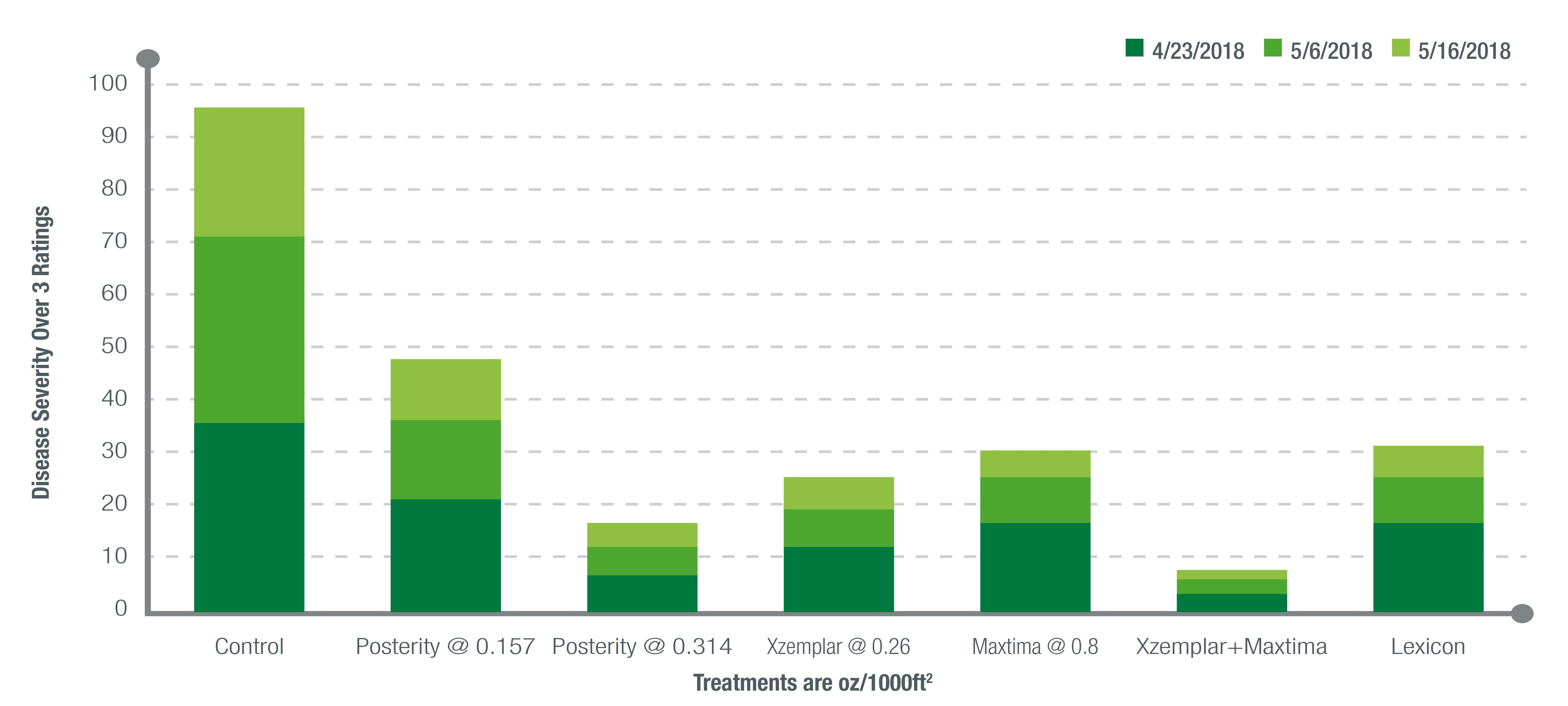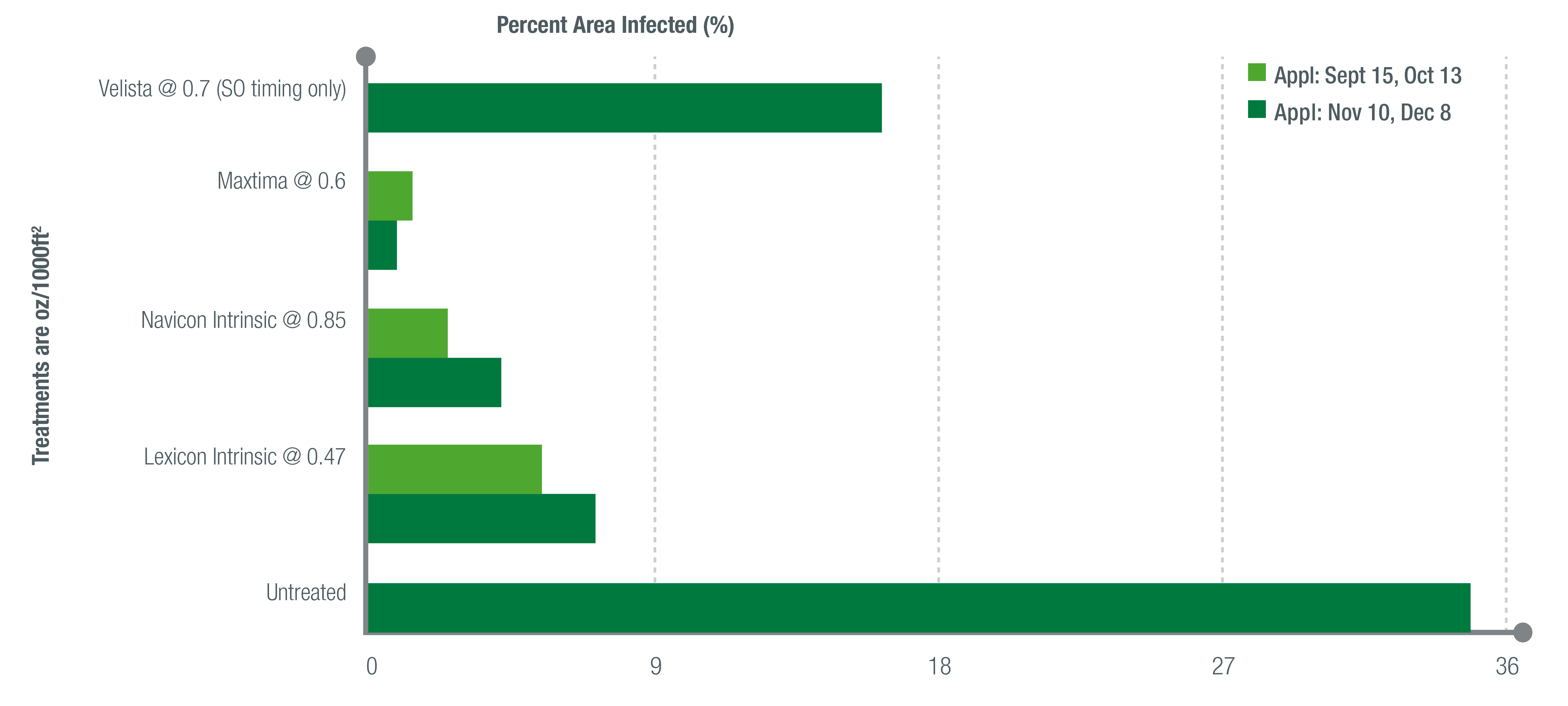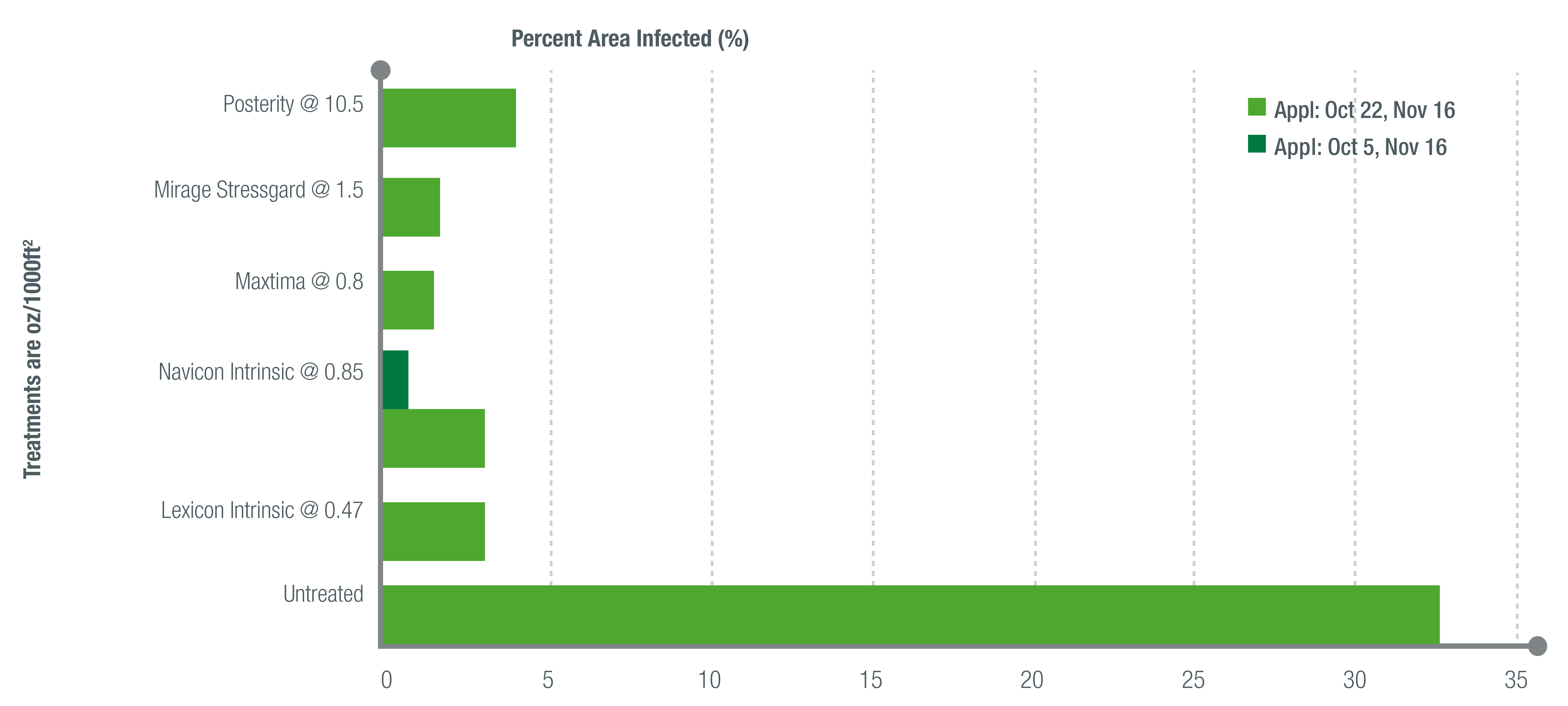DISEASE CONTROL -
Spring Dead Spot
Spring dead spot is found in the transition zone of the United States on intensely managed bermudagrass including golf courses and athletic fields. The severity of the disease does not decline as the turf matures like take-all patch. It actually becomes more severe if left unmanaged attacking the roots, rhizomes and stolons of bermudagrass during the fall and winter months. While the fungus does not kill the plant directly, it does make it more susceptible to freezing injury making its damage more severe after extremely cold winters.
Symptoms of the Disease
- Circular patches from 6 inches to several feet in diameter
- Patches remain dormant as the turf greens up in the spring
- Roots, stolons and rhizomes are dark and rotten in affected areas
- Patches reoccur in the same spot each year and increase in size up to several inches each season
The centers of spring dead spot patches can sometimes reestablish with bermudagrass or other weedy species which results in a ring like appearance. Recovery can occur naturally by the spread of bermudagrass from the outside, but this is a very slow process and can take the entire growing season to happen in severe cases.
Spring dead spot patches while unsightly, also greatly weaken the uniformity of the playing surface and are more susceptible to weed invasion. While this disease primarily affects bermudagrass, it can also occur in certain varieties of zoysiagrass like ‘Meyer’ and ‘El Toro.’
Spray Program Recommendations
Greens
| Two applications of Lexicon® Intrinsic® brand fungicide at 0.47 fl oz, 28 days apart in the Fall when soil temperatures are around 65oF | OR | Two applications of Navicon® Intrinsic brand fungicide at 0.85 fl oz, 28 days apart in the Fall when soil temperatures are around 65oF | OR | Two applications of Maxtima® fungicide at 0.6 – 0.8 fl oz, 28 days apart in the Fall when soil temperatures are around 65oF |
Fairways
| Two applications of Navicon® Intrinsic brand fungicide at 0.85 fl oz, 28 days apart in the Fall when soil temperatures are around 65oF | OR | Two applications of Maxtima® fungicide at 0.6 – 0.8 fl oz, 28 days apart in the Fall when soil temperatures are around 65oF |
Our Research
Martinez, UGA, 2017 - 2018
Control of Spring Dead Spot on an Ultradwarf Bermudagrass Green
Martin, SC, 2017 - 2018
Spring Dead Spot for Control on an Ultradwarf Bermudagrass Green at Green-Up
Pest
Spring dead spot
(Ophiosphaerella korrae)
Applications Varies by treatment
Sept 15, Oct 13 (Velista only applied at this timing)
Nov 10, Dec 8
Greatest Infection shown =
4-16-2108
Percent Area Infected
5-8-2018 = 20.7%
Richardson, UArk, 2018 - 2019
Control of Spring Dead Spot on ‘Mini Verde’ Ultradwarf Bermudagrass Greens
Pest
Spring dead spot
(Ophiosphaerella spp.)
Applications Varies by treatment
Only Maxtima and Navicon Intrinsic were applied on Oct 22 and Nov 16
All treatments were applied on Oct 5 and Nov 16
Percent Area Infected
Greatest Infection = April 16, 2019
What the Experts are Saying
Maxtima & Navicon: A new spring dead spot tool as powerful as Rubigan
Maxtima and Navicon for SDS and Take All Root Rot
An unprecedented weapon against spring dead spot from BASF
Perspectives from the Field
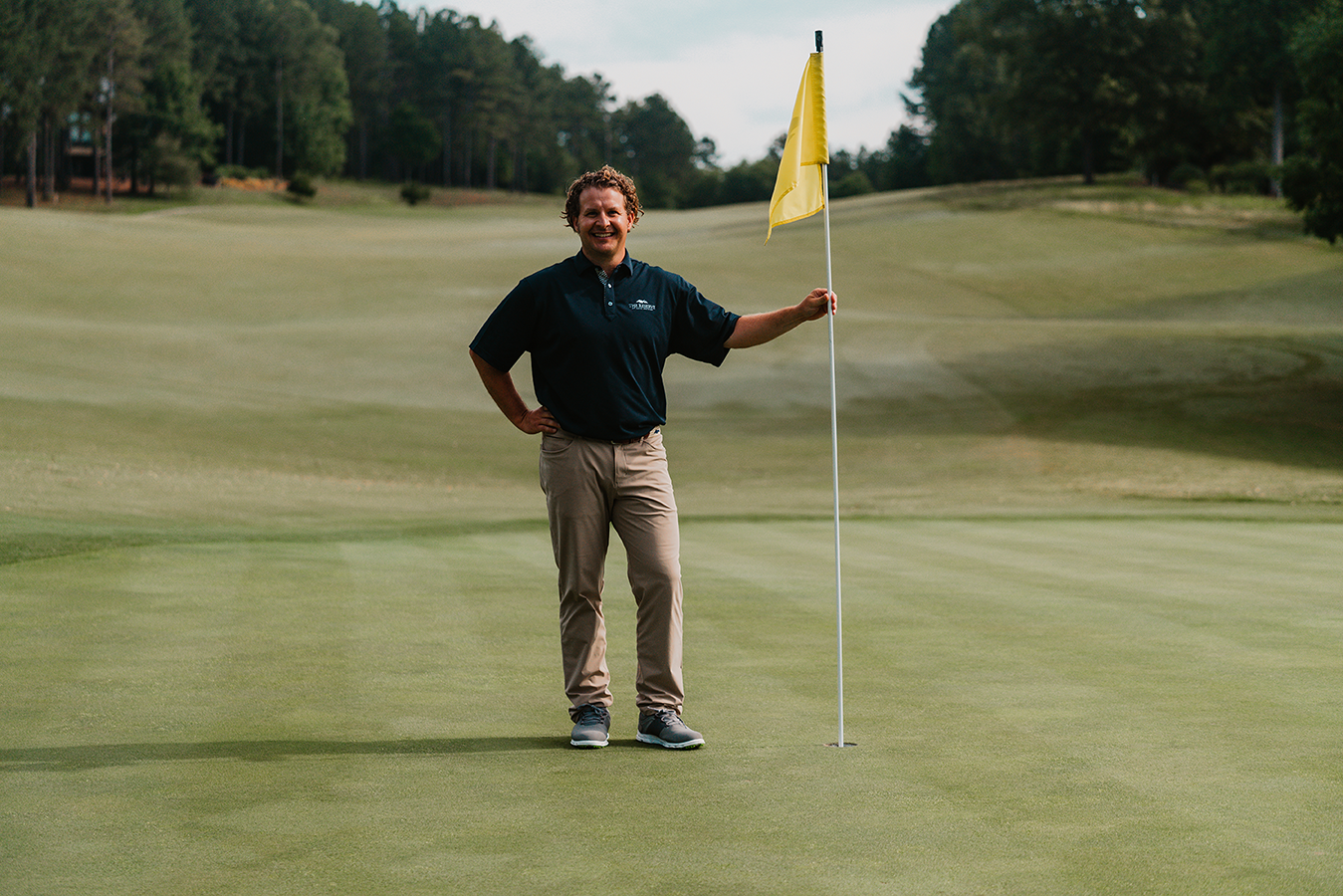
“One of the main things we noticed with Maxtima [fungicide] and the Navicon [Intrinsic brand fungicide] was how clean the dormant turf was and then as we came into spring transition, how earlier those two spots greened up…. Now we’re going to have the ability to not only treat a couple of areas, but we can now afford to treat the entire golf course.”
- Chris Vincent, CGCS at
The Reserve at Lake Keowee
Watch Testimonial: Spring Dead Spot vs. New Innovations - Maxtima & Navicon


